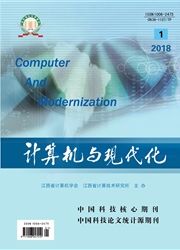

 中文摘要:
中文摘要:
由于无线传感网络节点的能量有限,如何有效地利用有限资源以及实现数据的有效传输,成为研究热点问题。针对农田区域广以及种植作物杂等环境特征,为延长农田无线传感器网络的生命周期,提高传感网的数据包投递率,构建了适用于农田信息采集的无线传感器网络架构,提出了一种混合式的分簇路由算法HCRA(hybrid clustering routing algorithm),研究了簇的形成、簇头竞选以及簇间路由过程,并对HCRA算法与低功耗自适应集簇分层型算法LEACH(low-energy adaptive clustering hierarchy),以及使用固定簇半径的混合节能分簇算法HEED(hybrid energy-efficient distributed clustering)进行了仿真试验。结果表明:在1 000次迭代周期下,采用HCRA算法的网络生存时间要比LEACH算法长约28%,比HEED算法长约12%;采用HCRA算法的数据包投递率要比LEACH算法高约34个百分点,比HEED算法高约16个百分点。该研究可为农田环境信息采集自动化监测系统提供参考。
 英文摘要:
英文摘要:
As the wireless sensor network node's energy is limited,how to effectively use the limited resources and the effective transmission of data becomes a hot topic.In order to extend the life cycle of farmland wireless sensor network and improve the packet delivery rate of sensor network,a wireless sensor network suitable for farmland information collection was constructed,and a hybrid clustering routing algorithm(HCRA) was proposed in this paper.Two classical algorithms,LEACH(low-energy adaptive clustering hierarchy) and HEED(hybrid energy-efficient distributed clustering),were evaluated for their merit to extend life cycle of wireless sensors.In the LEACH algorithm,all cluster head nodes communicate directly with the sink nodes,so that energy consumption of the cluster head node far from the sink node was serious,and cannot guarantee the cluster head evenly distributed,which could make some cluster head nodes' energy consumption too large,affecting the network life cycle.The HEED algorithm,on the other hand,used the cluster head to communicate directly with the sink node,which consumed a lot of energy.Because the farmland information collection range was large,those two algorithms were not fully applicable to the wireless sensor network information gathering in farmland environment.Based on this evaluation and the principle of the HEED algorithm,we proposed a hybrid clustering routing algorithm(HCRA) for farmland information collection.In the proposed algorithm,the network model and the energy consumption models were described separately.In the network model,the monitoring area of the sensor network was abstracted as a circle area.Each node in the network had its own unique ID,and the location was not changed after the deployment was completed.All nodes were distributed evenly in the area.In the energy consumption model,the energy consumption of the wireless sensor network increased with the increase of the distance between the transmitting node and the receiving node,regardless of the power dis
 同期刊论文项目
同期刊论文项目
 同项目期刊论文
同项目期刊论文
 期刊信息
期刊信息
